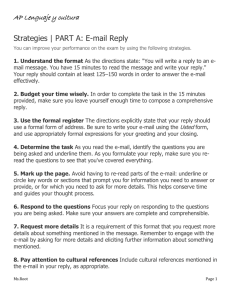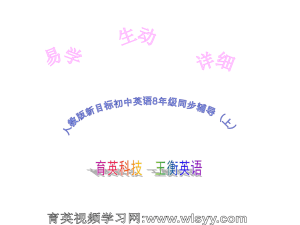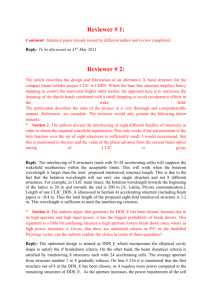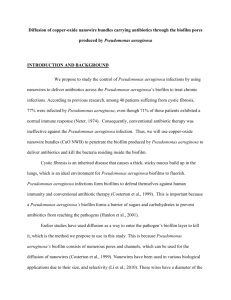Reply to referees
advertisement
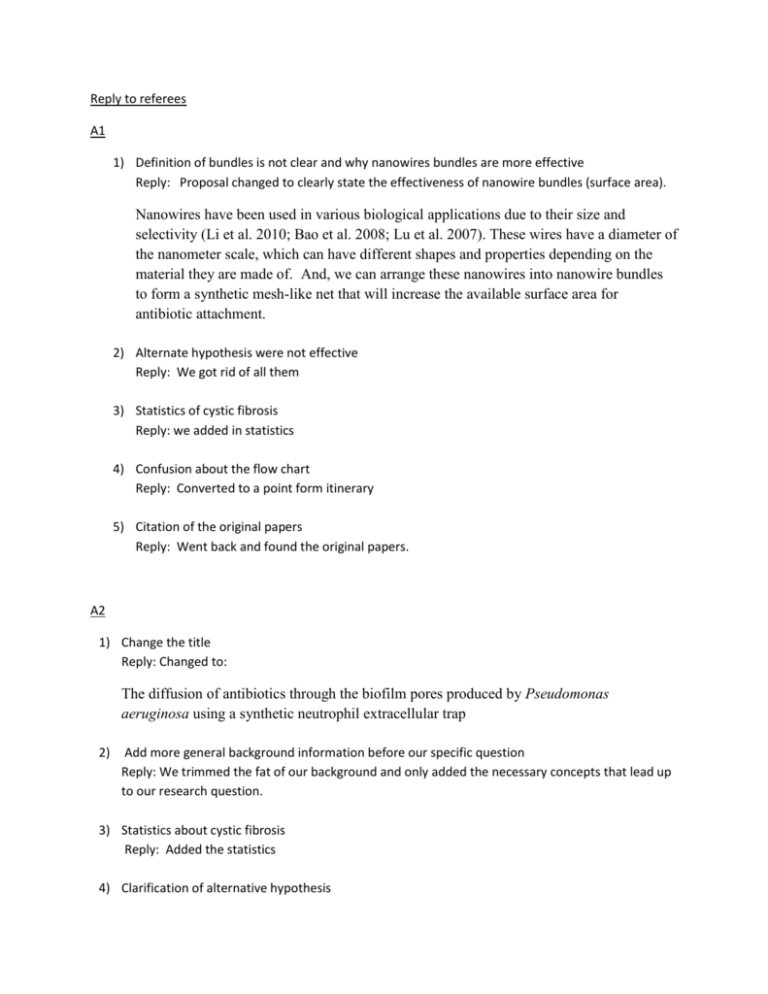
Reply to referees A1 1) Definition of bundles is not clear and why nanowires bundles are more effective Reply: Proposal changed to clearly state the effectiveness of nanowire bundles (surface area). Nanowires have been used in various biological applications due to their size and selectivity (Li et al. 2010; Bao et al. 2008; Lu et al. 2007). These wires have a diameter of the nanometer scale, which can have different shapes and properties depending on the material they are made of. And, we can arrange these nanowires into nanowire bundles to form a synthetic mesh-like net that will increase the available surface area for antibiotic attachment. 2) Alternate hypothesis were not effective Reply: We got rid of all them 3) Statistics of cystic fibrosis Reply: we added in statistics 4) Confusion about the flow chart Reply: Converted to a point form itinerary 5) Citation of the original papers Reply: Went back and found the original papers. A2 1) Change the title Reply: Changed to: The diffusion of antibiotics through the biofilm pores produced by Pseudomonas aeruginosa using a synthetic neutrophil extracellular trap 2) Add more general background information before our specific question Reply: We trimmed the fat of our background and only added the necessary concepts that lead up to our research question. 3) Statistics about cystic fibrosis Reply: Added the statistics 4) Clarification of alternative hypothesis Reply: Got rid of them 5) Explain more about the implications of cystic fibrosis and its prevalence Reply: We did not see the relevance of adding more information about cystic fibrosis 6) State the positive outcomes of research if successful Reply: Added to the interpretation section: If our experimental results correlate with our expected results presented above, then our synNETs can be used as an alternative therapy for Pseudomonas aeruginosa biofilm infections. In addition, future studies could be conducted to determine the optimum concentration of CuO NWBs (without using antibiotic coupling) needed to effectively kill Pseudomonas aeruginosa biofilm growth. 7) Why magnesium oxide nanowires are mentioned in table 1 of the proposed research Reply: Was an error, our bad. A3 1) Explain why copper oxide nanoparticles? and why use copper? Reply: Justified our choice of copper based on the results from Harrison et al. Harrison (2005) also determined that 40 mM of lead, 120 mM of zinc, 140 mM of cobalt and nickel, and 300 mM of aluminum metal ions were required to destroy a biofilm, whereas only 30 mM of copper was required to have the same outcome. Thus, we decided to make our nanowires out of copper because copper was effective at low concentrations and non toxic to biological systems. 2) Used too many references in a paragraph Reply: Formatted differently. 3) How many people are affected by cystic fibrosis? Reply: We used results from previous research to determine how many people were affected. According to previous research, among 40 patients suffering from cystic fibrosis, 77% were infected by Pseudomonas aeruginosa, even though 71% of these patients exhibited a normal immune response (Neter 1974; Diaz et al. 1970; Diaz and Neter 1970). 4) Need more information about expected results Reply: We changed the section entirely: Our expected results from the ANOVA statistical test should reveal 100% growth in the control and antibiotic only treatments, less than 100% growth in the CuO NWBs only treatment, and 0% growth in the antibiotic coupled CuO NWBs treatment. 5) Explain antibiotic coupling Reply: Reworded the entire section: To attach our antibiotics, we will use electrostatic interactions (CuO NWBs positive charge with the antibiotics negative charge) to couple with our CuO NWBs. A solution of ciprofloxacin/tobramycin will be cast onto the CuO NWBs separately and then slowly evaporated to produce our synNETs. These synNETs will be stored in a refrigerator (4℃).


